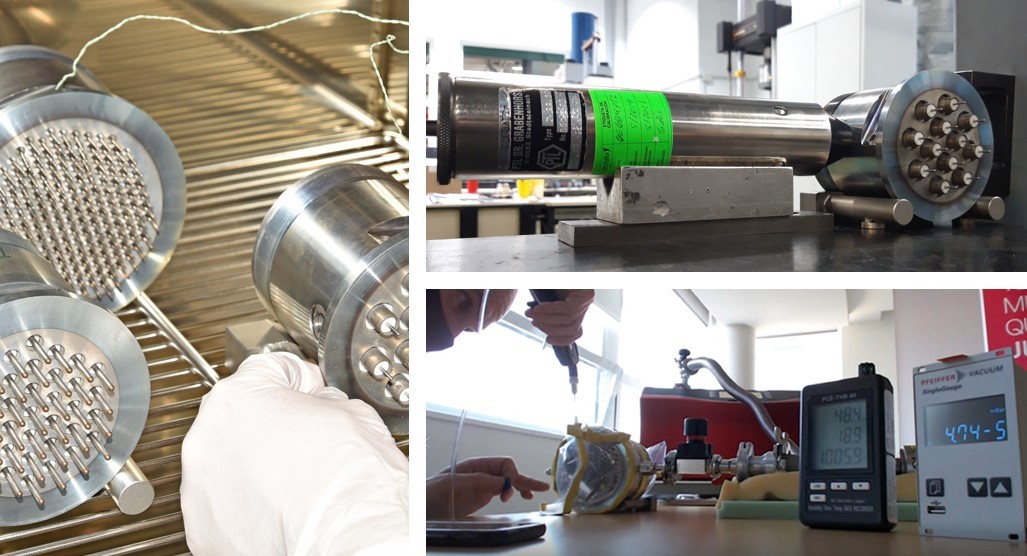ITER Feedthrough prototypes pass testing successfully

Qualification of electrical feedthrough bulkheads being subject to different campaign tests. Left: thermal cycling tests; top right: impact test; bottom right: helium leak test. © Tecnalia
ITER requires an extensive diagnostic system to monitor the experiment. Inside the Vacuum Vessel, there will be many sensors to measure the temperature, irradiation, composition, etc. of the plasma. The signals produced by the sensors will travel through the walls of the vacuum vessel so that experts outside can interpret the data.
Cables carrying those signals must be very resistant to withstand the extreme conditions of ITER. Moreover, as the vacuum vessel is hermetically sealed, cables must run through it without breaking the vacuum. The F4E Diagnostics Team, together with the F4E supplier IDOM, have been working on different feedthrough prototypes to accomplish these objectives. Last year, we saw some promising results at the beginning of the testing campaign.
As a continuation of this activity, from December 2020 until last March, the prototypes have gone through a series of tests designed to push them to their limits. It is as if the prototypes had undergone a series of dramatic episodes in a very short span of time: an unexpected release of vapour (pressure test), an earthquake (accidental vibration test), a collision with another object (impact test), a fire (overtemperature test), etc. After all these events, one could expect that the prototypes would be severely damaged. But it was not the case. The final leak test showed that the prototypes still kept a level of tightness almost as good as at the beginning of the whole process.
Tecnalia, an IDOM subcontractor, has been in charge of performing this test battery. “This test campaign has been really a challenge due to the wide variety of tests involved and of course due to the pandemic period that inevitably slowed down its execution. The challenge was finally overcome thanks to the professionalism of Tecnalia, CTA (for vibration tests) and IDOM technicians,” explains Isabel Aramburu, Tecnalia Materials Engineering Lab Manager.
Iñigo Eletxigerra, IDOM Project Team Leader, also stresses the work prior to these tests. “The successful completion of the qualification tests for the In-Vessel electrical feedthroughs is the culmination of several years of design and prototyping works carried out by an excellent team.”
Miguel Pérez, F4E Project Manager, welcomes the results. “We are very satisfied, and to some extent very positively surprised, with the results of this qualification campaign on the In-Vessel electrical feedthroughs. Currently, we are in the process of concluding the final design review. We expect to produce the drawings that will be given to the manufacturers within the year and to start fabricating the item in 2022.”